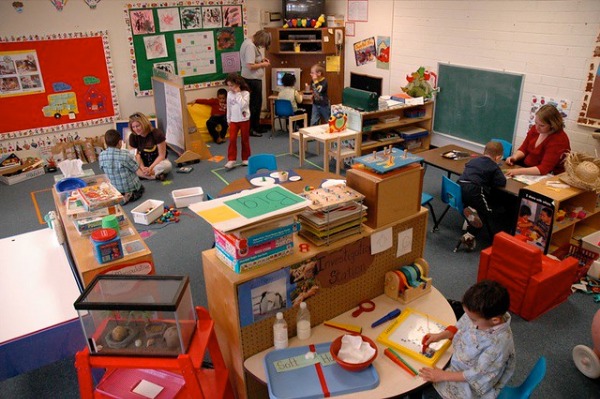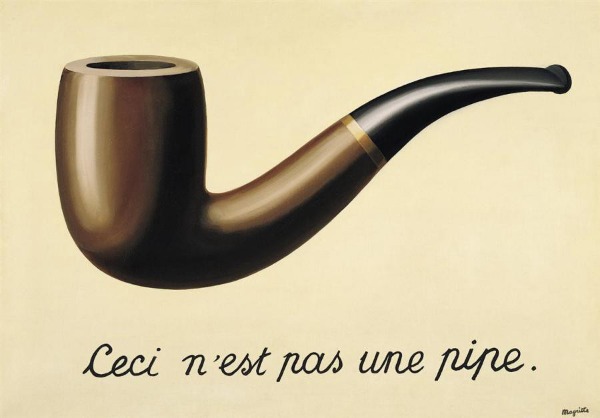I got a copy of Douglas Hofstadter's book, Godel, Escher, Bach: an Eternal Golden Braid, when I started working at NJIT in 2000. It was my lunch reading. I read it in almost daily spurts. I often had to reread because it is not light reading.

 It was published in 1979 and won the 1980 Pulitzer Prize for general non-fiction. It is said to have inspired many a student to pursue computer science, though it's not really a CS book. It was further described on its cover as a "metaphorical fugue on minds and machines in the spirit of Lewis Carroll." In the book itself, he says "I realized that to me, Godel and Escher and Bach were only shadows cast in different directions by some central solid essence. I tried to reconstruct the central object, and came up with this book."
It was published in 1979 and won the 1980 Pulitzer Prize for general non-fiction. It is said to have inspired many a student to pursue computer science, though it's not really a CS book. It was further described on its cover as a "metaphorical fugue on minds and machines in the spirit of Lewis Carroll." In the book itself, he says "I realized that to me, Godel and Escher and Bach were only shadows cast in different directions by some central solid essence. I tried to reconstruct the central object, and came up with this book."
I had not finished the book when I left NJIT and it went on a shelf at home. This summer I was trying to thin out my too-many books and I came upon it again with its bookmarker glowering at me from just past the halfway point in the pages. So, I went back to reading it. Still, tough going, though very interesting.
I remembered writing a post here about the book (it turned out to be from 2007) when I came upon a new book by Hofstadter titled I Am a Strange Loop. That "strange loop" was something he originally proposed in the 1979 book. This post is a rewrite and update on that older post.
The earlier book is a meditation on human thought and creativity. It mixes the music of Bach, the artwork of Escher, and the mathematics of Godel. In the late 1970s when he was writing interest in computers was high and artificial intelligence (AI) was still more of an idea than a reality. Reading Godel, Escher, Bach exposed me to some abstruse math (like undecidability, recursion, and those strange loops) but (here's where Lewis Carroll's "What the Tortoise Said to Achilles" gets referenced though some of you will say it's really a Socratic dialogue as in Xeno's fable, Achilles and the Tortoise) each chapter has a dialogue between the Tortoise and Achilles and other characters to dramatize concepts. Allusions to Bach's music and Escher's art (that loves paradox) also are used, as well as other mathematicians, artists, and thinkers. Godel's Incompleteness Theorem serves as his example of describing the unique properties of minds.

 His new book back then was I Am a Strange Loop which focuses on the "strange loop" that he originally proposed in the 1979 book. I haven't read that book, but since I made it through the earlier volume (albeit in 18 years), I may give Strange Loop a try.
His new book back then was I Am a Strange Loop which focuses on the "strange loop" that he originally proposed in the 1979 book. I haven't read that book, but since I made it through the earlier volume (albeit in 18 years), I may give Strange Loop a try.
From what I read about the author, he was disappointed with how Godel, Escher, Bach (GEB) was received. It certainly got good reviews - and a Pulitzer Prize - but he felt that readers and reviewers missed what he saw as the central theme. I have an older edition but in a 20th-anniversary edition, he added that the theme was "a very personal attempt to say how it is that animate beings can come out of inanimate matter. What is a self, and how can a self come out of stuff that is as selfless as a stone or a puddle?"
I Am a Strange Loop focuses on that theme. In both books, he addresses "self-referential systems." (see link at bottom)
One thing that stuck with me from my first attempt at GEB is his using "meta" and defining it as meaning "about." Some people might say that it means "containing." Back on the early part of this century, I thought about that when I first began using Moodle as a learning management system. When you set up a new course in Moodle (and in other LMSs since then), it asks if this is a "metacourse." In Moodle, that means that it is a course that "automatically enrolls participants from other 'child' courses." Metacourses (AKA "master courses") feature all or part of the same content but customized to the enrollments of other sections.
This was a feature used in big courses like English or Chemistry 101. In my courses, I thought more about having things like meta-discussions or discussions about discussions. My metacourse might be a course about the course. Quite self-referential.
I suppose it can get loopy when you start saying that if we have a course x, the metacourse X could be a course to talk about course x but would not include course x within itself. Though I suppose that it could.
Have I lost you?
Certainly, metatags are quite common on web pages, photos and for cataloging, categorizing and characterizing content objects. Each post on Serendipity35 is tagged with one or more categories and a string of keyword tags that help readers find similar content and help search engines make the post searchable.

 A brief Q&A with Hofstadter published in Wired in March 2007 about the newer book says that he considers the central question to him to be "What am I?."
A brief Q&A with Hofstadter published in Wired in March 2007 about the newer book says that he considers the central question to him to be "What am I?."
His examples of "strange loops" include Escher's piece, "Drawing Hands," which shows two hands drawing each other, and the sentence, "I am lying."
Hofstadter gets spiritual in his further thinking and he finds at the core of each person a soul. He feels the "soul is an abstract pattern." Because he felt the soul is strong in mammals (weaker in insects), it brought him to vegetarianism.
He was considered to be an AI researcher, but he now thought of himself as a cognitive scientist.
Reconsidering GED, he decides that another mistake in that book's approach may have been not seeing that the human mind and smarter machines are fundamentally different. He has less of an interest in computers and claims that he always thought that his writing would "resonate with people who love literature, art, and music" more than the tech people.
If it has taken me much longer to finish Godel, Escher, Bach than it should, that makes sense if we follow the strange loop of Hofstadter's Law. ("It always takes longer than you expect, even when you take into account Hofstadter's Law.)
End Note:
A self-referential situation is one in which the forecasts made by the human agents involved serves to create the world they are trying to forecast. http://epress.anu.edu.au/cs/mobile_devices/ch04s03.html. Social systems are self-referential systems based on meaningful communication. http://www.n4bz.org/gst/gst12.htm.

 The new semester is starting at most American colleges and I'm thinking about the silos on campuses. I don't mean anything having to do with agricultural programs which probably have a silo or two. I mean the figurative silos that are still quite real that appear in departments and schools on campus.
The new semester is starting at most American colleges and I'm thinking about the silos on campuses. I don't mean anything having to do with agricultural programs which probably have a silo or two. I mean the figurative silos that are still quite real that appear in departments and schools on campus. Faculty in higher ed and K-12 are prepping for the start of the semester or the school year. In K-12, schools in the southern part of the U.S. already started earlier this month. Students - and later their teachers - have been turning to YouTube videos to learn for at least a decade. YouTube started in 2005, but in the early years, it was more about personal and funny videos than it was about learning.
Faculty in higher ed and K-12 are prepping for the start of the semester or the school year. In K-12, schools in the southern part of the U.S. already started earlier this month. Students - and later their teachers - have been turning to YouTube videos to learn for at least a decade. YouTube started in 2005, but in the early years, it was more about personal and funny videos than it was about learning.

 It was published in 1979 and won the 1980 Pulitzer Prize for general non-fiction. It is said to have inspired many a student to pursue computer science, though it's not really a CS book. It was further described on its cover as a "metaphorical fugue on minds and machines in the spirit of Lewis Carroll." In the book itself, he says "I realized that to me, Godel and Escher and Bach were only shadows cast in different directions by some central solid essence. I tried to reconstruct the central object, and came up with this book."
It was published in 1979 and won the 1980 Pulitzer Prize for general non-fiction. It is said to have inspired many a student to pursue computer science, though it's not really a CS book. It was further described on its cover as a "metaphorical fugue on minds and machines in the spirit of Lewis Carroll." In the book itself, he says "I realized that to me, Godel and Escher and Bach were only shadows cast in different directions by some central solid essence. I tried to reconstruct the central object, and came up with this book."
 His new book back then was
His new book back then was
 A brief Q&A with Hofstadter published in
A brief Q&A with Hofstadter published in